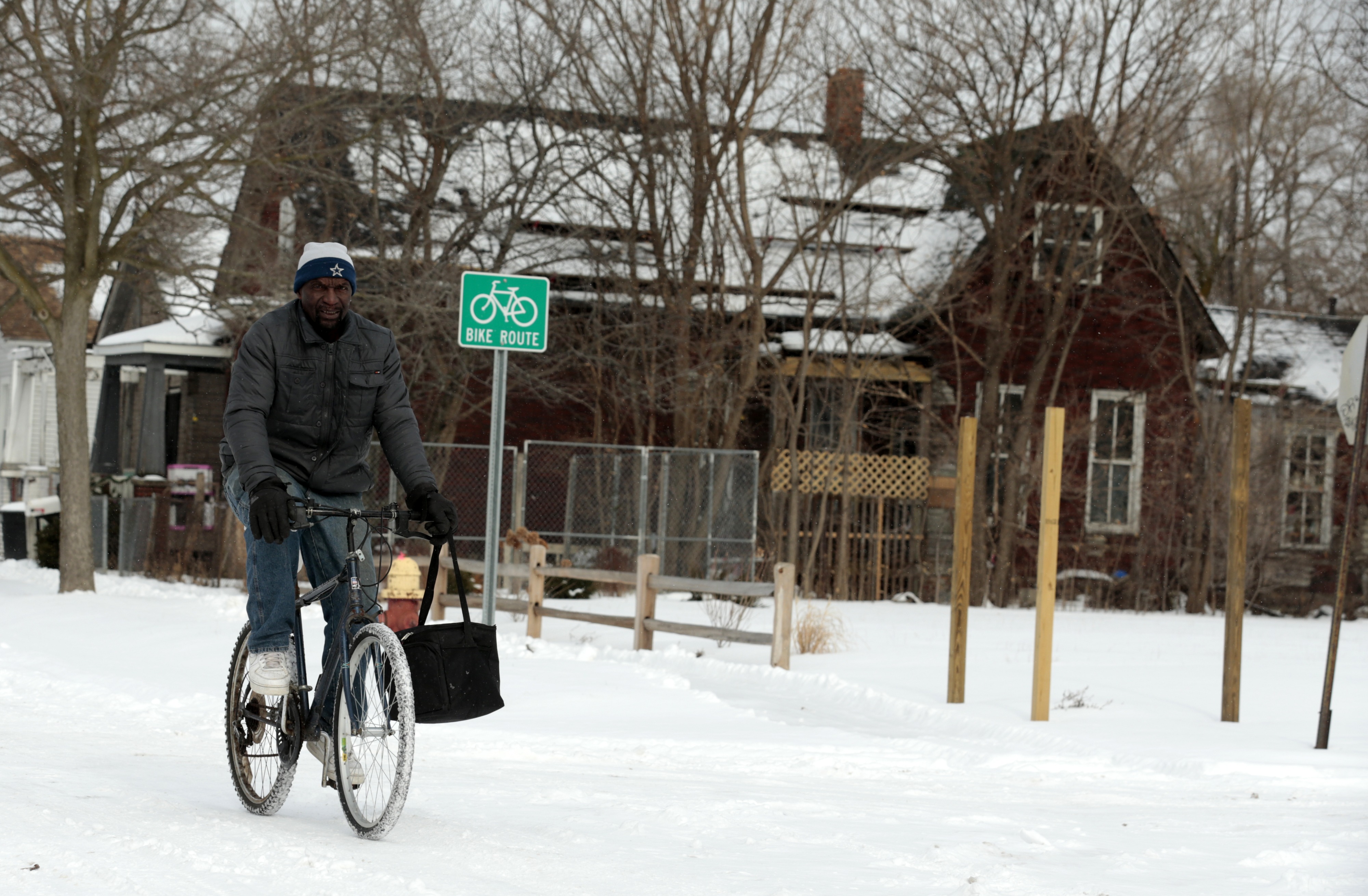US Midwest braces for dangerous arctic chill
Jerry Jackson rides his bike on a cold day on Cochrane Street on January 29, 2019 in Detroit; Michigan has declared a statewide emergency in view of the frigid temperatures (JEFF KOWALSKY)
Chicago (AFP) – Millions of Americans braced Tuesday for a dangerous polar vortex which began to settle over a broad swath of the United States, threatening to set new records for cold as schools and businesses closed and authorities warned of frostbite.
Temperatures in almost a dozen states stretching over 1,200 miles from the Dakotas to Ohio were forecast to be the coldest in a generation, if not on record.
The National Weather Service (NWS) forecast temperatures between -10 to -40 degrees Fahrenheit (-23 to -40 Celsius) by Wednesday, with wind chill making it seem as cold as -65 degrees Fahrenheit in one area of Minnesota.
The culprit was a lobe of arctic air that has broken away from the polar vortex that usually encircles the North Pole.
“A record cold air mass will continue into the central and northern US, spreading to the east coast on Tuesday,” the NWS said.
“Wind chills of -30 to -60 (Fahrenheit) can be expected over portions of the northern Plains and Great Lakes region.”
Michigan and Wisconsin declared statewide emergencies in advance of the frigid temperatures.
Americans were heeding warnings to stay home if possible on Wednesday, when temperatures were expected to be at their coldest. Scores of schools, businesses and government agencies announced closures in multiple states.
“People exposed to extreme cold are susceptible to frostbite in a matter of minutes,” warned the NWS.
Lawrence Gottlieb of the University of Chicago Medical Center said the threat was significant “when temps fall below zero, especially when there is a strong wind.”
More than 70 warming centers were opened in Chicago, America’s third city, where temperatures were forecast to potentially rival or exceed the all-time record of -27 degrees Fahrenheit.
Wind chill would make the air feel closer to -40 to -50 degrees in the windy city, officials said.
More than 1,000 flights were canceled Monday at two Chicago airports.
Minneapolis, Minnesota opened warming centers in government buildings and libraries, a 24-hour emergency shelter, and allowed residents to stay on public buses and trains for warmth.
– Global warming? –
Meanwhile the northeast and parts of the south were contending with a snow storm, which had previously dumped up to a foot of snow (30 centimeters) in the Midwest over the weekend and still lingered in some areas Tuesday.
White-out conditions were reported in Grand Rapids, Michigan, with morning traffic snarled for hours on a major interstate.
“Not only is brutal cold invading the central parts of the country, accumulating snow and freezing roadways all the way into the deep south could make travel dangerous,” the NWS said.
The snow was expected to make the arctic air feel even colder, the effects of which had already arrived in Canada.
The frigid cold blanketing much of the US’s northern neighbor, from Manitoba in the western Prairies region to Atlantic Canada, prompted a rare “hazardous” cold warning from Environment Canada.
President Donald Trump used the occasion to voice skepticism of global warming, saying on Twitter: “What the hell is going on with Global Warming? (sic) Please come back fast, we need you!”
Scientists say climate change is causing more extreme weather, and one theory is that arctic air currents usually trapped around the North Pole are weakened and dislodged by a warming climate.
“When the polar vortex is weak or ‘perturbed,’ the flow of air is weaker and meanders north and south,” climatologist Judah Cohen of the firm Atmospheric and Environmental Research told CBS News.
“This allows a redistribution of air masses where cold air from the Arctic spills into the mid-latitudes and warm air from the subtropics is carried into the Arctic.”
Disclaimer: This story is published from a syndicated feed. Siliconeer does not assume any liability for the above story. Validity of the above story is for 7 Days from original date of publishing. Content copyright AFP.


